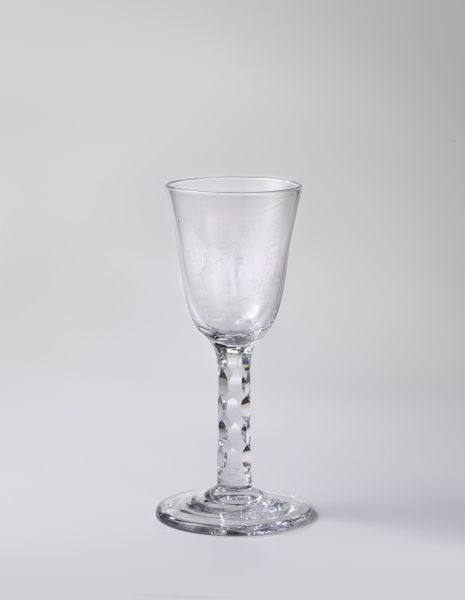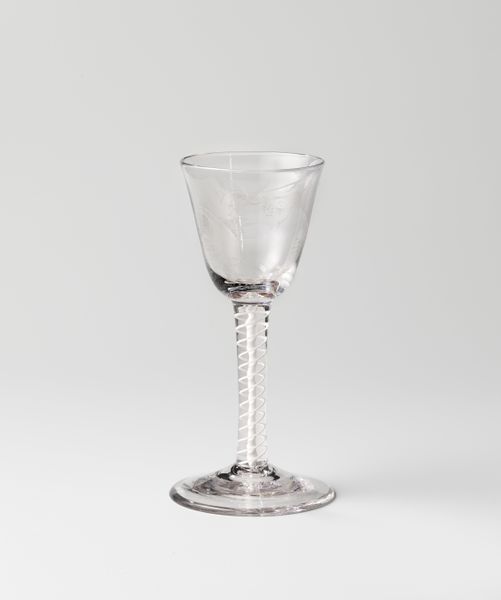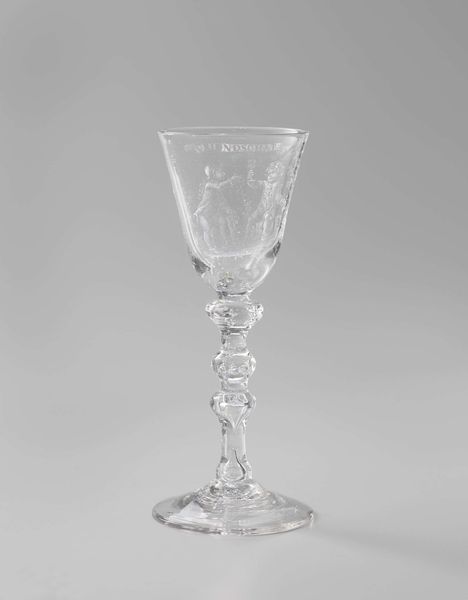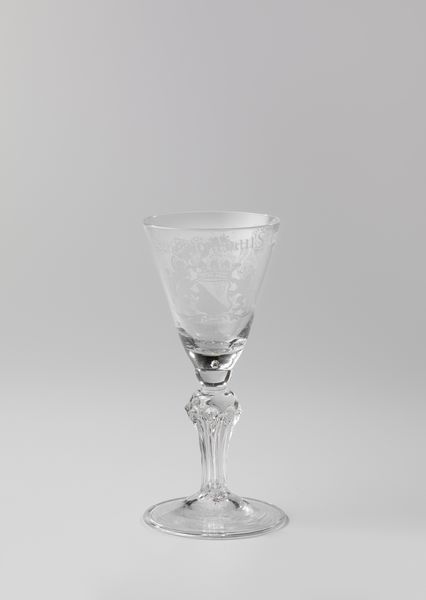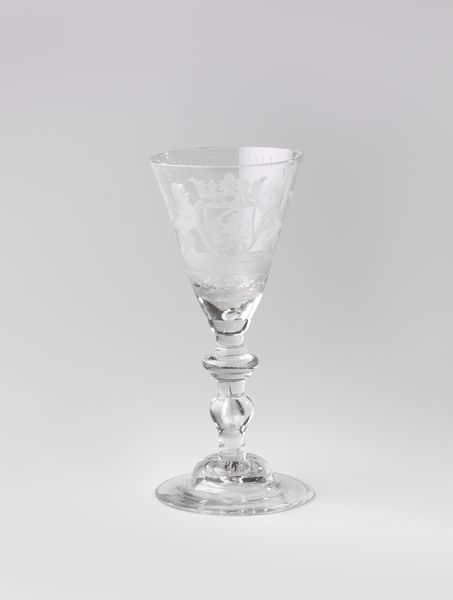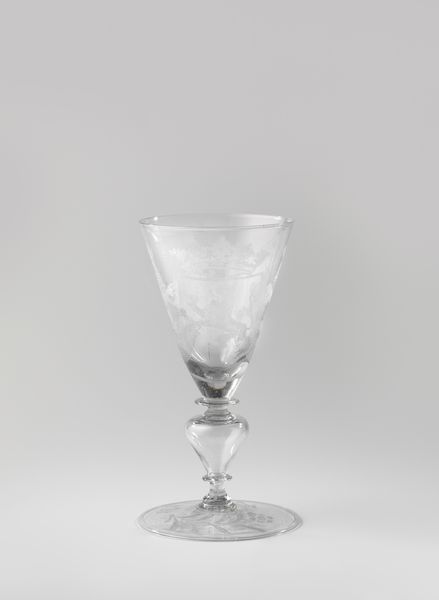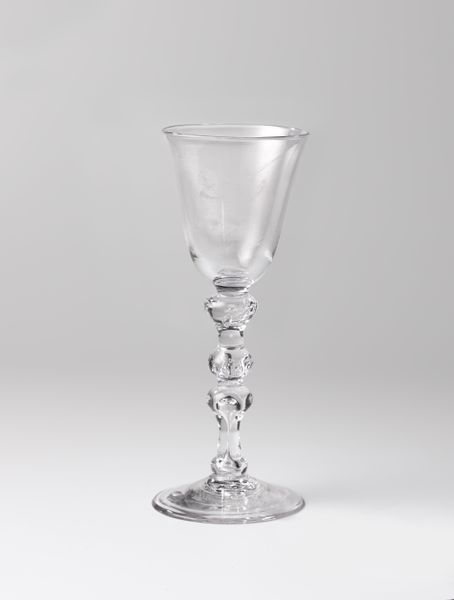
Dimensions: height 15.9 cm, diameter 7.7 cm
Copyright: Rijks Museum: Open Domain
Editor: Here we have an 18th-century glass, created around 1775, and titled “Slingerglas met een voorstelling van een stier”—so, a "sling glass" with a depiction of a bull. The swirling design in the stem really caught my eye. What do you see in this piece, looking at it through a Materialist lens? Curator: The glass itself is fascinating. Consider the social context. Glassblowing in the 18th century was hardly mass-produced, it was an art involving specific knowledge, tools and working conditions. This glass signals a consumer base with both access to currency, and desire to possess luxury goods like glass drinkware. The image of the bull further adds layers, maybe this cup was commissioned to symbolize wealth and strength, tied to agricultural ownership. What processes are implied here beyond mere functionality? Editor: That's fascinating. It speaks to status. I hadn’t really thought of the labor involved. How does the Rococo style play into this material reality? Curator: Rococo, think about it—its extravagance in paintings or sculptures contrasts the plain material, which is transparent. The glass, an industrial material shaped into a piece of craft with handworked etchings. Did the artist see himself as an artisan or artist? Where would they acquire the knowledge? How did those in power benefit from such an object? These details help break down distinctions and create insight into material culture. Editor: I guess I always viewed these objects as display items in cabinets and completely glossed over the production side of the labor. Considering that Rococo was for the wealthy, and this is a functional object... Curator: Exactly! Examining glass production's means and accessibility at the time demystifies some historical separations and provides avenues of dialogue concerning wealth, consumption, skill, and labor of anonymous workers involved with it all. Editor: That really gives me a new appreciation, considering the whole industrial system that had to exist to get to the final product. Curator: I agree! Considering the intricate details of something so easily passed by in a museum collection can tell rich stories concerning labour history through materiality when studied attentively within the right contexts!
Comments
No comments
Be the first to comment and join the conversation on the ultimate creative platform.

